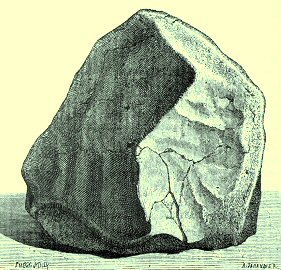University of Chicago | 09 Sept 2010
Neutron-rich Chromium Isotope Anomalies in Supernova Nanoparticles - N Dauphas et alScientists have identified the microscopic shrapnel of a nearby star that exploded just before or during the birth of the solar system 4.5 billion years ago.
Faint traces of the supernova, found in a meteorite, account for the mysterious variations in the chemical fingerprint of chromium found from one planet and meteorite to another. University of Chicago cosmochemist Nicolas Dauphas and eight co–authors report their finding in the late Sept. 10, 2010 issue of the Astrophysical Journal.
Scientists formerly believed that chromium 54 and other elements and their isotopic variations became evenly spread throughout the cloud of gas and dust that collapsed to form the solar system. “It was a very well–mixed soup,” said Bradley Meyer, a professor of astronomy and astrophysics at Clemson University who was not a co–author of the study. “But it looks like some of the ingredients got in there and didn’t get completely homogenized, and that’s a pretty interesting result.”
Scientists have known for four decades that a supernova probably occurred approximately 4.5 billion years ago, possibly triggering the birth of the sun. Their evidence: traces of aluminum 26 and iron 60, two short–lived isotopes found in meteorites but not on Earth.
These isotopes could have come from a type II supernova, caused by the core–collapse of a massive star. “It seems likely that at least one massive star contributed material to the solar system or what was going to become the solar system shortly before its birth,” Meyer said.
Researchers have already extracted many type II supernova grains from meteorites, but never from a type IA supernova. The latter type involves the explosion of a small but extremely dense white–dwarf star in a binary system, one in which two stars orbit each other. It should now be possible to determine which type of supernova contributed the chromium 54 to the Orgueil meteorite.
- Astrophysical Journal 720(2) 1577 (10 Sept 2010) DOI: 10.1088/0004-637X/720/2/1577
arXiv.org > astro-ph > arXiv:1007.4016 > 22 Jul 2010

